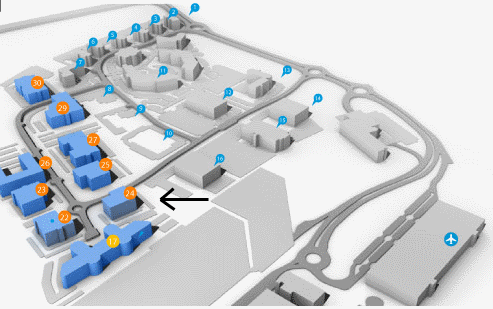Current Size: 100%
2.3.3 Regression Analysis: Ward/ED Characteristics and Cancer Incidence
- Home /
- Publications /
- Cancer atlases /
- 2.3.3 Regression Analysis: Ward/ED Characteristics...
NCR books
- Cancer Atlas
- Acknowledgements
- Foreword
- Summary
- 1. Introduction
- 2. Methods
- 3. Non-melanoma skin cancer
- 4. Breast cancer
- 5. Colorectal cancer
- 6. Lung cancer
- 7. Prostate cancer
- 8. Non-Hodgkin's lymphoma
- 9. Stomach cancer
- 10. Melanoma of the skin
- 11. Bladder cancer
- 12. Head and neck cancer
- 13. Leukaemia
- 14. Pancreatic cancer
- 15. Kidney cancer
- 16. Oesophageal cancer
- 17. Ovarian cancer
- 18. Brain and other central nervous system cancer
- 19. Cancer of the corpus uteri
- 20. Cancer of cervix uteri
- 21. Discussion
- 22. Conclusions and recommendations
- Appendix 1: Relative risks (with 95% confidence intervals) by area characteristic, cancer site and sex
- Appendix 2: Electoral division tables
- Appendix 3: Summary statistics for each cancer site
- Appendix 4: Regions referred to in the atlas
- References
- Index of figures, maps and tables
A count of the number of cases of cancer by type and sex was available for each ward/ED. Relating these counts to the ward/ED characteristics is traditionally done by modelling the count data using Poisson regression. However a key assumption behind this approach is that the mean and variance of the counts being modelled are the same. Deriving the mean number of cancer cases diagnosed in each small geographic area, and the variance between areas in these counts, illustrates that this assumption is not valid and that the data is over-dispersed; that is, the variance is greater than the mean (Table 2.7) (Breslow, 1984).
Table 2.7 Mean and variance in the number of cancer cases diagnosed in each ward/ED: 1995-2007
cancer | males | females | ||
mean | variance | mean | variance | |
non-melanoma skin cancer | 14.2 | 347.5 | 12.5 | 334.7 |
breast | - | - | 9.8 | 186.5 |
colorectal | 5.4 | 48.9 | 4.3 | 35.0 |
lung | 5.3 | 58.7 | 3.3 | 30.7 |
prostate | 8.4 | 108.3 | - | - |
non-Hodgkin’s lymphoma | 1.3 | 3.7 | 1.2 | 3.4 |
stomach | 1.5 | 5.0 | 0.9 | 2.7 |
melanoma of the skin | 0.9 | 2.5 | 1.4 | 5.3 |
bladder | 1.6 | 5.4 | 0.6 | 1.4 |
head and neck | 1.4 | 5.3 | 0.6 | 1.2 |
leukaemia | 1.2 | 2.9 | 0.8 | 1.9 |
pancreas | 0.9 | 1.9 | 0.9 | 2.3 |
kidney | 1.0 | 2.7 | 0.6 | 1.3 |
oesophagus | 1.0 | 2.5 | 0.6 | 1.3 |
ovary | - | - | 1.6 | 5.7 |
brain and other central nervous system | 0.8 | 1.6 | 0.6 | 1.1 |
cervix uteri | - | - | 1.0 | 3.1 |
corpus uteri | - | - | 1.3 | 4.1 |
Although a great deal of this variance may be explained by the differing population sizes of each geographic area, which is adjusted for in a Poisson regression model, we decided to use a modification of Poisson regression, known as negative binomial regression, to adjust more fully for the over-dispersion. This model produces a relative risk (RR) for each categorical variable included in the model, relative to a baseline value. For example, if RoI is taken as the baseline (by definition, RR=1) in a variable indicating which country the geographic area is in, then if NI has a relative risk greater than 1, this means that the incidence of cancer is higher in NI than RoI; conversely a relative risk lower than 1 means that incidence is lower in NI than RoI. Five small area characteristics were examined for a relationship to cancer incidence using this approach—country, population density tertile, and quintiles of unemployment, third-level education and elderly living alone (see section 2.2.4.3).
It has already been noted (section 2.2.4.3) that the variables we are studying are not completely independent of each other. Therefore, if we see a relationship between cancer risk and a specific variable (for instance level of unemployment), part of this relationship might be due to another factor, such as the average age of the population, which would influence both cancer rates and unemployment levels. For this reason, measures of the effect of each variable must be adjusted for the effects of the others (see section 2.3.1). The most important adjustment is for age, as cancer risk rises rapidly with age. Two comparisons were made between NI and RoI, one of which was adjusted for age alone, and the other for age, population density, unemployment, education and percentage of elderly living alone. All other relative risks reported were adjusted for the effects of all the other variables. Thus, risk estimates are reported for:
- country adjusted by age only;
- country, adjusted by age, population density, unemployment, education and elderly living alone;
- population density, adjusted by age, country, unemployment, education and elderly living alone;
- unemployment, adjusted by age, country, population density, education and elderly living alone;
- education, adjusted by age, country, population density, unemployment and elderly living alone; and
- elderly living alone, adjusted by age, country, population density, unemployment and education.
The risk estimates with 95% confidence intervals and tests of statistical significance are given in full for each site in Appendix 1. Summary figures are presented in each chapter.
Building 6800
Cork Airport Business Park
Kinsale Road, Cork T12 CDF7
Email Contact us here
Tel: +353 (0) 21 4318014
Fax: +353 (0) 21 4318016



